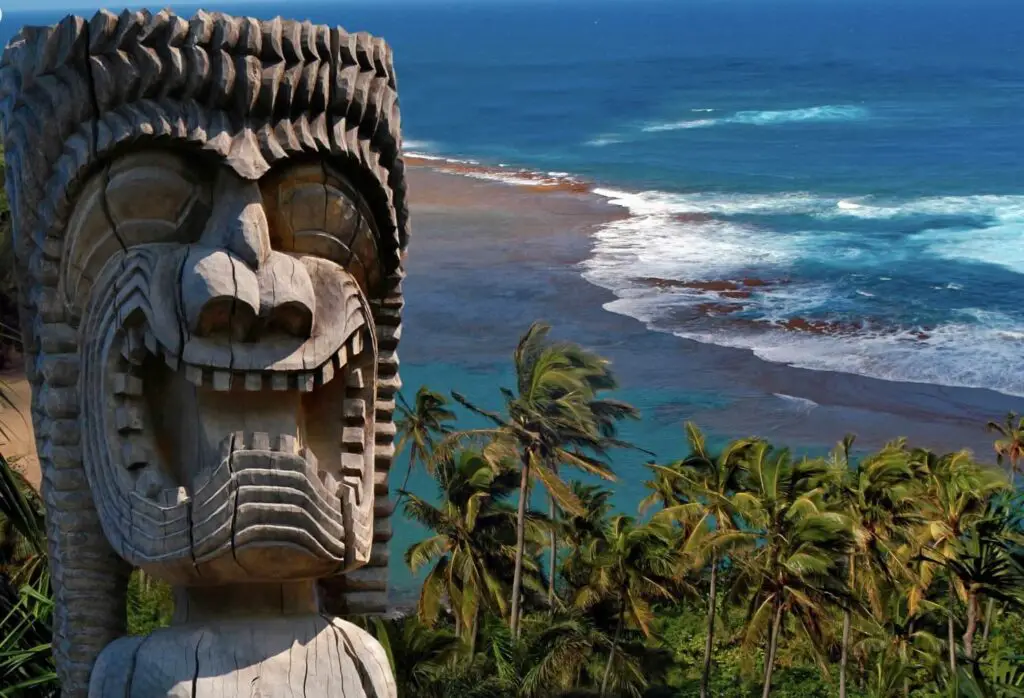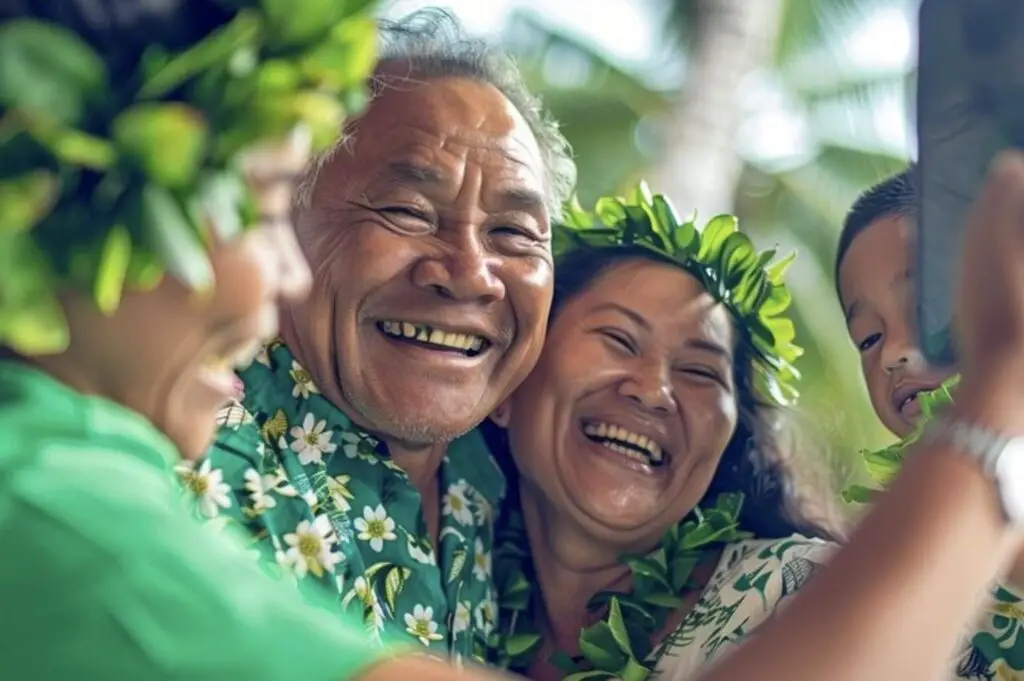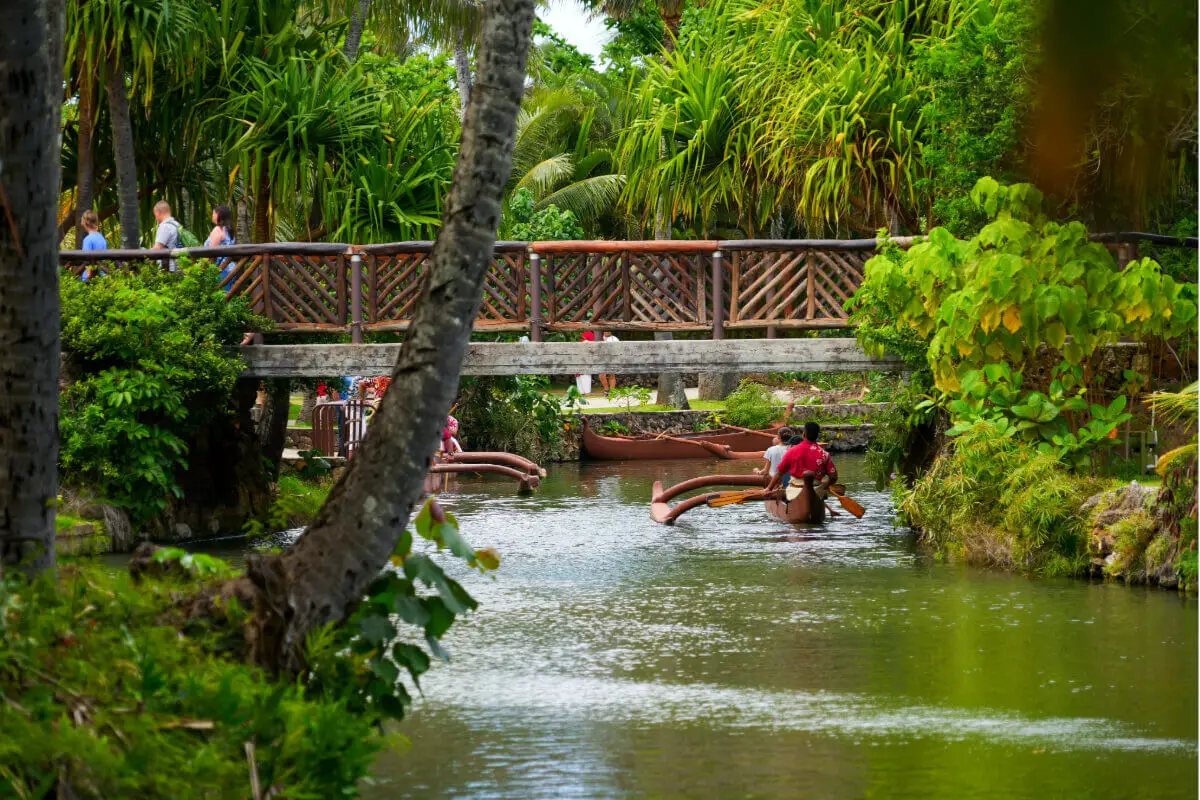Enveloped in vast expanses of the sapphire Pacific Ocean, the Polynesian islands are home to a race that boasts a rich tapestry of culture, history, and identity. Stretching across thousands of tropical isles, the Polynesian race is a fascinating exploration of human adaptability, resilience, and a steadfast connection to nature.
From anthropology and social systems to their immortal traditions and widespread global influences, understanding the Polynesian race magnifies the scope of human diversity and the endless possibilities of cultural evolution. It invites us to journey through time, ensuring we delve deeper into the intricacies of their unique history and the world they have crafted amidst the Pacific’s turquoise waves.
Table of Contents
- Understanding Polynesian Anthropology
- History of the Polynesian Race
- Polynesian Culture and Traditions
- Polynesian Influence on Global Culture
- Related Questions
Understanding Polynesian Anthropology
Dive into the Polynesian Paradise: Understanding Cultural Uniqueness
Aloha, globe wanderers! Consider this a love letter to all dreamers whose thoughts are filled with visions of swaying palms and magical sunsets. Today, we sail to the splendid Polynesian islands where the earth kisses the ocean, cultures bloom, and dreams come alive!
Polynesia, a paradise archipelago in the Pacific Ocean, is a treasure chest of living cultural and anthropological marvels. These islands are home to an ethnic group known as Polynesians – a people as captivating as the landscapes they inhabit. Let’s roll up our proverbial sleeves and dive into a world filled with unique cultural charm and anthropological wonders.
Glittering like pearls strewn across the vast cerulean Pacific, the Polynesian islands host 40 distinct cultures. Imagine visiting a place where over a thousand languages are spoken, each heartbeat of the drum tells a different story, and face tattoos aren’t a fashion trend but symbolic representations of personal achievements; that’s Polynesia for you.
What sets Polynesians apart? There are many things, but let’s start with being a navigator extraordinaire. While today’s world can’t get enough of GPS, Polynesians have, for centuries, relied on their profound knowledge of stars, birds, and sea currents to navigate this oceanic expanse. Spoiler alert: They are spot on!
Have you ever heard of communal living? Polynesians don’t just practice it; they celebrate it! The concept of extended families living together is deeply ingrained in Polynesia’s cultural roots. Sharing their daily harvest and teaching tribal traditions and life lessons not in closed classrooms but within the wide embrace of nature strengthens bonds and ensures cultural heritage is passed down through generations.
The Polynesian feast, or ‘Luau,’ is an explosion of flamboyant festivals, tantalizing tastes, and warm camaraderie. As you join these feasts, you witness how ancient culinary traditions meet modern innovation. Every morsel, whether the luscious ‘poi’ or the succulent ‘lau lau,’ is a harmonious blend of nature and culture.
Polynesians’ spiritual connection to nature also echoes in their art and performances. Have you been entranced by the grace and rhythm of hula dancing or awed by the primal energy of the Maori Haka? Thumping the ground in traditional dances and painting tales in tattoos, Polynesians become living embodiments of art, adding layers to their rich cultural tapestry.
An integral part of Polynesian identity lies in their mythology—intricate weavings of folklore and tradition passed down over millennia. Their legends speak of mighty gods and daring heroes. With each story shared, these wisdom-laden tales fortify the cultural heritage and transport listeners to realms of mystical, mythical splendor.
Whisked in the swirl of vibrant colors, enchanting music, characteristic tattoos, and striking dances, it’s hard not to admire the Polynesian race’s resilience, close-knit community ethics, and unwavering passion for preserving their cultural identity. In today’s fast-paced world, taking a moment with them allows us to learn valuable lessons and admire the harmony of living in sync with nature.
So, to all the wanderlust-filled souls, take that spontaneous urge to explore new horizons. Let the allure of the Polynesian race pull you into a world that bridges history and present, tradition and innovation, anthropology and art. Unfurl sails, lose sight of the shore and let the Polynesian islands begin conversing with your wanderer’s heart. Safe travels, friends!

History of the Polynesian Race
Unstitching the Polynesian Puzzle: A Historic Voyage of Migration
A spectacular blend of skill, resourcefulness, and daredevilry paints the narrative of Polynesian migration. Picture the thrill and uncertainty of setting forth into the horizon, the mystery of the expansive ocean and the cosmos above, now magnified in the absence of the familiar sights, sounds, and sense of direction. Here we are, wading into the waters of history to immerse ourselves in the odyssey of these sea-gypsies turned settlement founders.
The Polynesian triangle, with Hawaii, Easter Island, and New Zealand forming its corners, houses a group of over 1,000 islands, a testament to the Polynesians’ navigational prowess and adventurous spirit. Their migration saga remains one of the most ambitious prehistoric human expeditions, a testament to human tenacity and maritime wanderlust.
Predated ancient Egyptians embarking on their pyramid-building endeavor and preceded the time when mighty Rome was merely an infant. This voyage dates back as far as 2000 BC and extends until 1200 AD, aligning with what historians often call the “Polynesian Epoch.” This critical period was characterized by a series of daring exploratory voyages, birthing several far-reaching Polynesian colonization across the vast expanse of the Pacific.
For centuries, experts debated the origin point of this race, debating Formosa (modern-day Taiwan), Indonesia, and the Melanesian islands. However, archeological and linguistic studies later confirmed that Polynesians originated from Southeast Asia, specifically from the Lapita culture near Taiwan and the Philippines.
Interestingly, their voyages were not launched randomly but were planned. Pearl-like strings of islands like Samoas and Tonga were initially besieged, followed by the exploration and colonization of the far-flung islands. The Polynesians were masters of the nautical rite of passage, utilizing wind patterns, animal behaviors, and celestial bodies to traverse the treacherous Pacific waters.
These migrations were motivated by overpopulation, political conflict, and a desire for exploration. The urge to move was sometimes driven by available resources, like seafaring logs from a breadfruit tree or strong, knot-resistant hau wood for ropes.
Accompanied by domesticated animals, crops, and stone craftsmen who could establish a working society on the newly discovered island, they ensured the survival and continuity of their ancient Pacific culture. These expeditions enriched cultural diversity, leaving a legacy of myriad languages, mythology, art forms, and captivating stories.
As resilient as the volcanic rocks forming their homes, the Polynesians traversed the test of time. Their shared voyage of self-discovery embodies the true essence of exploration- an assemblage of courage, desire, and sheer fortitude. The Polynesian people crafted a historical epic of staggering proportions, leaving behind an indelible narrative etched in the sands of time and the azure canvas of the Pacific Ocean.
Dive deep into their story and emerge with the knowledge and profound respect for a civilization that dared to defeat the unknown and harmoniously stitched together a civilization across a massive oceanic tapestry. Their world is a living testament to mankind’s ability to adapt, explore, and thrive in the most diverse environments.

Polynesian Culture and Traditions
Tattooing is one of the notable customs of the Polynesians. Contrary to what a rash conclusion might lead you to believe, tattoos in Polynesia extend beyond decorative art. They symbolize personal identity, social status, and spiritual protection and are often considered a rite of passage. Each intricate design tells a unique story, including lineage, personal achievements, or societal roles. Tattoos are not merely a trend in Polynesia but an art form steeped in centuries-old tradition.
In Polynesian societies, the conservation of ancestral knowledge and traditions is paramount. One way these societies preserve and pass down wisdom is through oral literature. This could be in songs, chants, myths, and legends. The principles embedded in these verbal artworks ensure that each generation receives the knowledge and wisdom of the past and continues to pass this treasure on to future generations. They serve as mnemonic devices for preserving fable, law, genealogy, and even navigational techniques, holding a pride of place in the archipelago’s social fabric.
The Polynesians recognized the dependency between humans and the environment long before the current environmental consciousness swept through the modern world. Their awareness of living in harmony with an often harsh and unpredictable environment is manifested in their land cultivation techniques.
Farming methods like the ‘Ahupua’a system’ in Hawaii divided the land into sustainable, self-sufficient allotments, following the flow of resources from mountain to sea. This practice ensured that everyone shared in the land’s rich and diverse bounty while protecting and preserving the natural ecosystem.
The Polynesians display a deep reverence for their ancestors. Ancestor worship, an integral part of Polynesian spiritual systems, is seen in traditional ceremonies and rituals. The ‘marae’ or temple was, and in some places continues to be, a central location for conducting these religious events, social gatherings, and community discussions.
And yes, sports lovers, ‘Surfing’ in its primitive form can be traced back to Polynesia. ‘He’enalu’ or wave sliding was a popular pastime activity in Polynesia, particularly in ancient Hawaii, where riding the waves on long wooden boards was a thrilling activity and a revered art form, signifying harmony with the sea.
Whether it’s the time-honored tattoo traditions, respect for oral history, spiritual practices, or sustainable farming, exploring Polynesian societies breeds respect for their customs and connection with nature.
The resilient and humble islanders have a depth of cultural traditions that underline their identity and their respect for the environment they inhabit. Balanced and in harmony with their picturesque surroundings, their way of life beautifully embodies the idea of living with nature, not against it. As beautiful Polynesian culture teaches, you might embrace the ‘Aloha spirit’—the interconnectedness and mutual respect for all forms of life.

Polynesian Influence on Global Culture
Now, let’s examine Polynesian influence on global trends. To start with, it’s impossible to discuss a global phenomenon without mentioning Polynesian tattoo culture—a widely revered ancient art form that surpasses mere aesthetics. Worldwide, people sport meaningful Polynesian symbols inked on their skin, taking inspiration from this tradition. The symbolic appeal and distinctness of Polynesian tattoo patterns have fascinated and influenced modern tattoo artistry universally, amplifying this Polynesian charm.
Imagine the echoing rhythm of drums as the chants ring in rainforests and echo over the waters. This scene captures the essence of Polynesian oral literature culture, including songs, myths, and legends narrated through generations. Across the globe, a renewed fascination with this meaningful tradition is evident, contributing to a resurgence in the appreciation of folklore and oral histories.
Another contribution of Polynesian culture that has experienced worldwide acceptance is its sustainable and ecological farming techniques. Preservation of nature and harmony with the environment have deep roots in Polynesian life. Enthusiastic green thumbs are adopting these ecological concepts, turning towards more sustainable farming methods inspired by Polynesian techniques.
Ancestor worship, a critical Spiritual system of Polynesians, has found relevance globally. The emphasis on paying respect and remembering one’s lineage resonates with cultures worldwide, and there is a growing consciousness of the spiritual and emotional aspects of remembrance.
Polynesian culture is a treasure trove for thrill-seekers, with its historical roots in surfing. Modern surf culture owes a lot to these Pacific islanders who pioneered this water sport. People worldwide can thank Polynesians whenever they cut back on a reeling ocean wave.
Finally, what significant cultural impact the Polynesians have imparted, tangibly and intangibly, is the ‘Aloha spirit.’ The philosophy encourages living with compassion, kindness, and a mutual understanding of respect and harmony. Today, the ‘Aloha spirit’ has seeped into innumerable lives, sparking global transformation.
With its rich heritage and distinct humanistic approach, Polynesian culture has left a lingering influence on global trends. This simple yet profound cultural fabric woven with high respect for nature, communal harmony, and rich symbolism continues to inspire and fascinate. From their art to their lifestyle, the impression of Polynesian culture broadens our global community sense, evoking admiration and respect worldwide. Indeed, the beauty in difference lies in its shared appreciation and mutual respect. There, we find that we’re all globally Polynesian!

Indeed, the Polynesian race’s past echoes humanity’s unyielding spirit to explore and prosper in new frontiers. Their traditions, culture, and wide-reaching influence testify to their creative power and immense respect for nature.
From the dance floors that light up with the rhythmic sway of Hula to deep-seated religious beliefs and the boldly inked tattoos that narrate tales of old, the Polynesian race serves as an enduring emblem of human cultural richness. Their influence, visible in the global arena, is a testament to their vibrant existence and a continual inspiration for cultural harmony, mutual respect, and admiration in our shared world.
At A Bus On A Dusty Road, we talk about everything about culture, travel, life, sailing, and ex-pat living. We are all about “Living Life As A Global Citizen.” We explore social, cultural, and economic issues and travel.
We would love to have you be part of our community. Sign up for our newsletter to keep up-to-date by clicking here. If you have any questions, you can contact me, Anita, by clicking here.
Listen to our Podcast called Dusty Roads. You can find it on all major podcast platforms. Try out listening to one of our podcasts by clicking here.
Subscribe to our A Bus On A Dusty Road YouTube Channel filled with great videos and information by clicking here.
Related Questions
What Is Jibing In Sailing? Steps To A Proper Controlled Jibe
A jibe in sailing is when the boat moves with the stern through the wind. In a jibe, the stern will move through the wind. Like any sailing maneuver, when you have a crew, the helmsman or the captain steering the boat needs to adequately communicate with the crew about what is happening so that they know; this is especially true when jibing.
By clicking here, you can discover What Is Jibing In Sailing? Steps To A Proper Controlled Jibe.
What Is Tacking In Sailing? Steps To A Proper Tack
Tacking is when you move the boat’s bow into the wind to turn the boat’s direction. It is a very common maneuver that all sailors must learn to master. But with any sailing maneuver, there are proper steps, you must learn to do a proper and safe tack.
By clicking here, you can discover What Is Tacking In Sailing? Steps To A Proper Tack
What Is The Sailing Term For “No Wind”?
The term calm or becalm is used to describe sailing with no wind. In ancient times, the sailors also used the word Tide Over to indicate that there was no wind, so they were Tide Over or stuck without being able to sail.
By clicking here, you can discover What Is The Sailing Term For “No Wind”?

